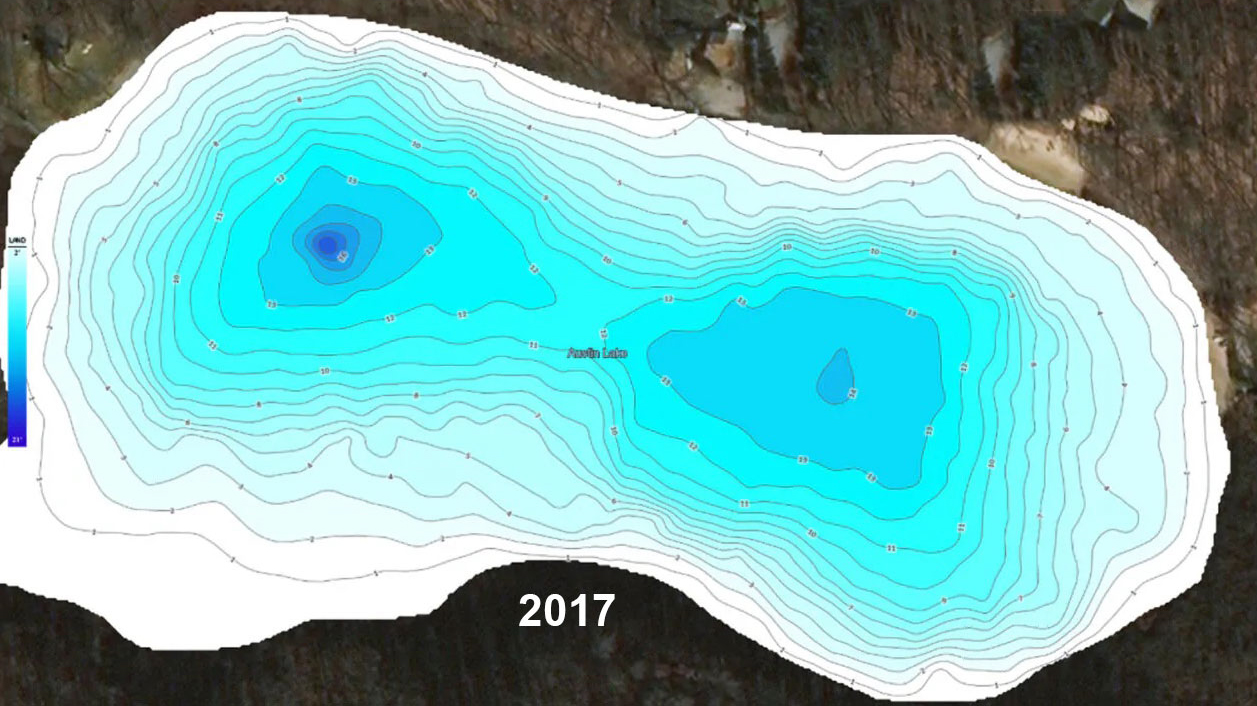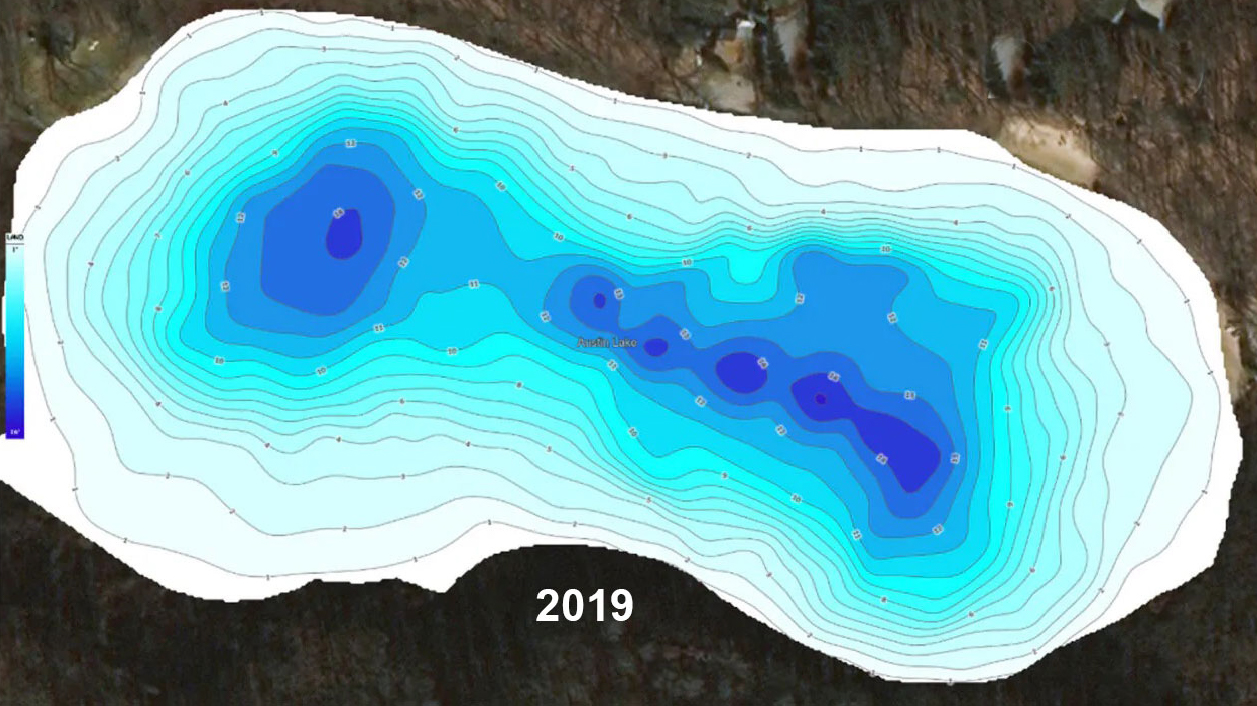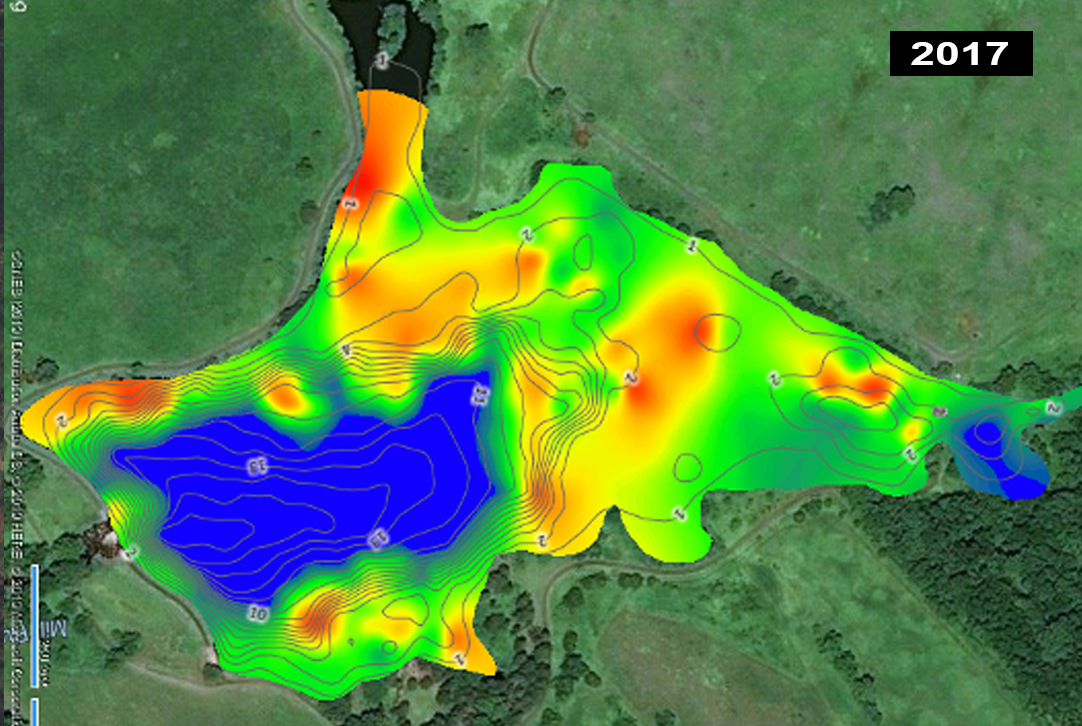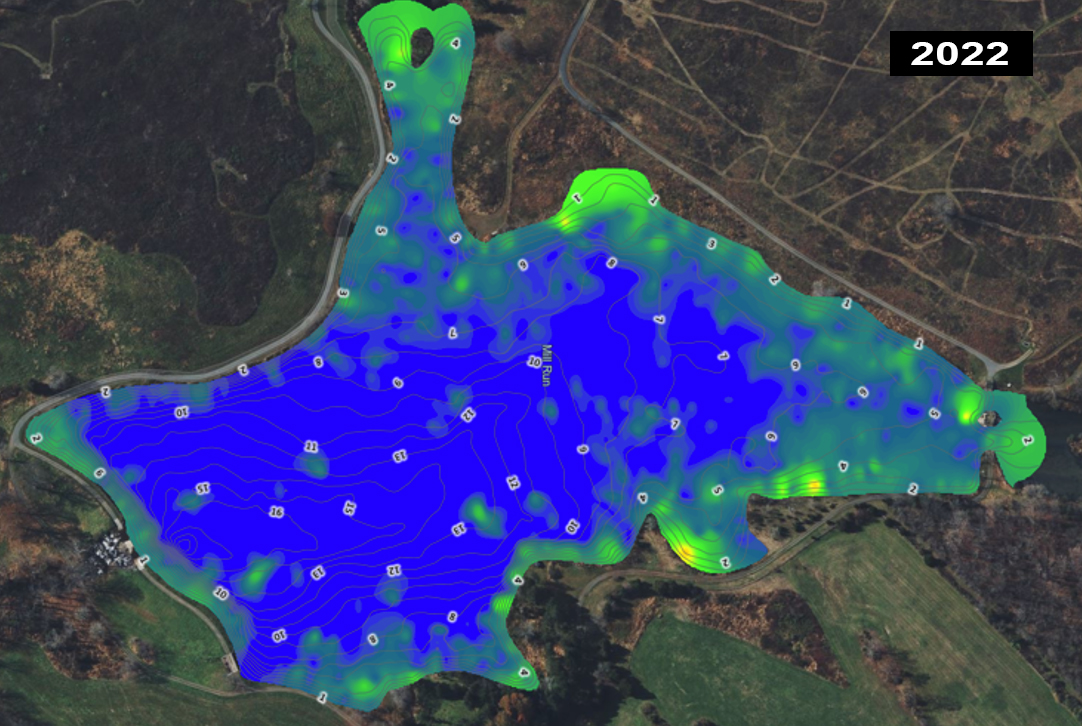

How do You Measure Bio-Dredging
What Is Bathymetric Analysis?
Bathymetric analysis is a technique that allows us to accurately measure the topography of a water body and create depth charts with accurate contours.
We use this information to calculate water volume and determine the aquatic plant biovolume in a water body.
Conducting annual bathymetric analysis enables us to measure changes in these parameters and interpret them to adapt and reoptimize lake management plans, bioaugmentation dosing regimens, and RADOR system performance in line with these changes.
2017 vs 2019 Bathymetric Scans


Nearly 2 feet of depth added in just 2 years
Why Does Bathymetric Analysis Matter?
Eliminating hypoxia is a critical factor in reversing eutrophication and restoring water quality.
Although determining the depth at which hypoxia starts provides some insight, bathymetric data delivers a more comprehensive understanding of the problem and enables us to calculate two key metrics; the volume of water and the surface area of sediment that are hypoxic.
This information informs the design stage by providing valuable insights into how advanced the eutrophication process is and the data needed for RADOR system design and the development of an appropriate bioaugmentation dosing program.
Many companies calculate dosage of treatments according to surface area, but that is a misguided perspective. A deep lake can have several times the water volume of a shallow lake with the same surface area, and that must be taken into account when determining dosing requirements.
How Do You Take Measurements?

We use sophisticated sonar scanning equipment to collect bathymetric data. Once the data is collected, we perform a variety of calculations and analyses using various algorithms to allow comparisons and inform decision-making.
What Does Bathymetric Data Tell You?
Studying the bathymetric data of a lake can provide a wealth of information:
Accurate bathymetric data enables us to see the changes in depth profile in a lake or reservoir.
2017 v 2019 Bathymetric Scans


This lake was hypoxic below 8 feet. By tracing out the 8-foot contour we can visualize the surface area of hypoxic sediment and calculate what percentage of the sediment surface area is hypoxic.

By calculating the volume of water at 8 feet of deeper we can calculate the percentage of the water volume that is hypoxic.

Bathymetric scans provide insight into the vegetative biovolume of aquatic plants in a lake, which enables us to measure the reduction in invasive weeds achieved over time.


In summary, detailed bathymetric scans and analysis are critical tools for understanding lake conditions, measuring the achievements of a Lake Management Action Plan, and informing adaptive management strategies for the future.
By simplifying the science behind bathymetric analysis and explaining its importance in the context of eutrophication reversal, we help stakeholders better understand the complexity of lake management and the value of data-driven decision-making.

Clear water, clear muck-free shoreline with RADOR oxygenation and Bio-Dredging
Engaging with lake associations, property owners, and local authorities in a clear and accessible manner about the role of bathymetric analysis in lake restoration efforts can foster a deeper appreciation for the scientific process and encourage support for comprehensive, evidence-based solutions.
By demystifying the technical aspects of bathymetric analysis and highlighting its practical applications, we can empower communities to take an active role in the stewardship of their cherished water bodies, ensuring their health and resilience for generations to come.
CLEAN-FLO
827 Lincoln Avenue, Suite 1
West Chester, PA 19380
Phone: 800-328-6656
E: contact@clean-flo.com

